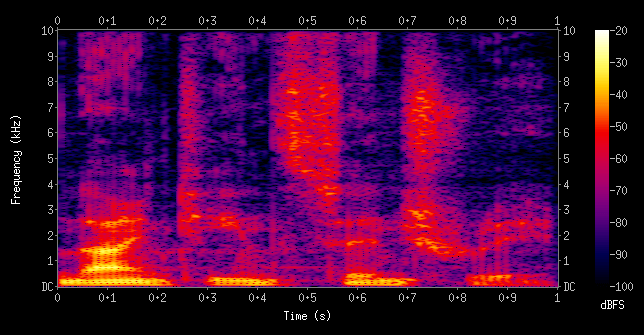Define Synthesis: How Does Spectral Synthesis Work?
Spectral Synthesis Explained
WE MADE IT!
This is the final article in our Define Synthesis series. It’s been a crazy journey and together we’ve learned so much.
So, let’s jump into spectral synthesis – the final stop on this sound design train.
Define Synthesis Series
How Do Synthesizers Work?
How Does Subtractive Synthesis Work?
How Does Additive Synthesis Work?
How Does FM Synthesis Work?
How Does Wavetable Synthesis Work?
How Does Vector Synthesis Work?
How Does AM Synthesis Work?
How Does Modular Synthesis Work?
How Does Granular Synthesis?
How Does Sample Based Synthesis Work?
How Does Spectral Synthesis Work?
How Do Vocoders Work?

What is Spectral Synthesis?
Above is a spectrograph. One not unlike the spectrographs you see in metering plugins such as SPAN by Voxengo. Time on the X-axis & frequency on the Y-axis.
Now imagine you have a harmonic soundwave playing through this spectrograph. If you were using subtractive synthesis you’d use filters, envelopes, and other tools to remove additional harmonics until you got the sound that you wanted.
Spectral synthesis operates in this realm, but functions differently – it functions visually.
Spectral synthesis VSTs such as Iris 2 by iZotope allow you to isolate frequency ranges of your choice inside the spectrograph. However, rather than being limited to waveforms… you can use recorded audio samples too!
Do you enjoy the way that Mixxed snare sample sounds? Wicked, so do we! But to have some fun with it you can load it into Iris 2 and isolate any frequencies you want. REALLY! It’s that simple.
You can select any frequency bits and pieces of the spectrograph and only those selected frequency ranges will playback when you press a key. The signal playback is sensitive to pitch too, so the octave your pressed key is in will be represented in the audio that you hear.
The soundscape possibilities are endless. Think of any visual pattern that you can draw in the physical realm and then draw it into your spectral synth. The signal that is outputted is the frequency morphed representation of your drawing!
You’re, essentially, creating boundless filter sweeps without the use of a filter!
Loop functions, LFOs, envelopes, multiple voices… spectral synthesis allows you to get hands-on with your sound design in ways previously unimaginable.
You can create sounds that would otherwise be impossible. Now that is awesome.
Synthesis Defined
That’s a wrap! A full wrap!
We started this journey over a week ago and we’ve both come so far. We started this journey with synthesizer fundamentals and how they operate, and then we explored each synthesis method.
And now it’s over to you, my humble synthesist. It’s your time to take all of this knowledge and create some crazy, out of this world, mind-bending, silly, emotional sounds!
I look forward to hearing them!
